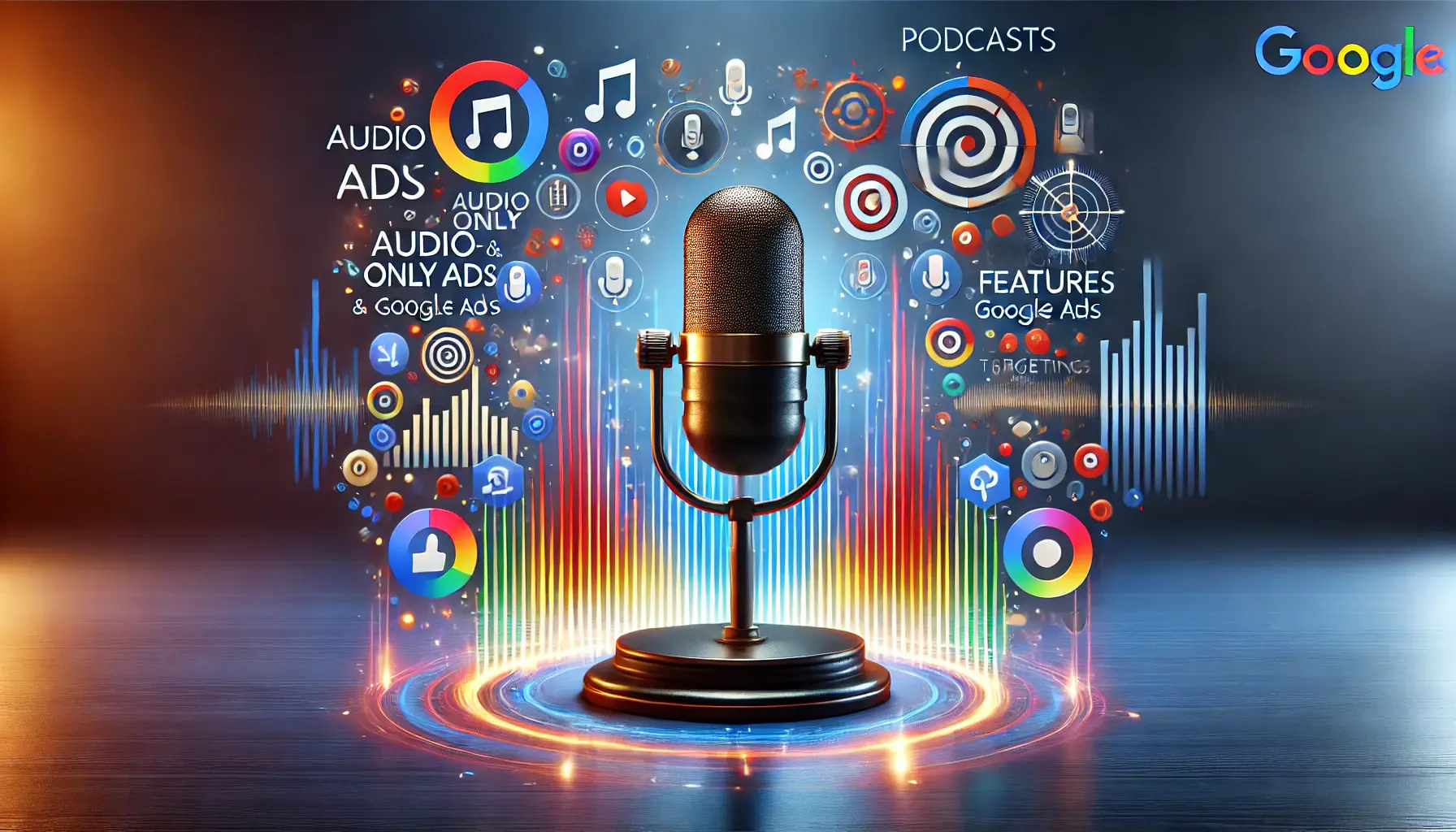Interactive websites have become the cornerstone of the digital experience, offering users not just information but an engaging journey through sounds, visuals, and interactivity.
Among the plethora of tools available for web developers to enhance user engagement, HTML audio stands out as a powerful feature that brings websites to life.
This article delves into the intricacies of utilizing HTML audio to create immersive and interactive websites, highlighting its importance in the modern web development landscape.
The integration of audio into websites is not a new concept; however, the advent of HTML5 has revolutionized how audio is implemented on the web.
Gone are the days of relying on third-party plugins and complex coding to play sound.
HTML5 introduces a simple yet effective audio tag, making it easier for developers to embed sound directly into web pages.
This advancement opens up a myriad of possibilities for creating dynamic web experiences that captivate and engage users.
- Understanding the HTML Audio Element
- Optimizing Audio for Web Performance
- Creating Accessible Audio Content
- Integrating Audio for User Engagement
- Audio in E-Learning and Training Platforms
- Audio for Enhancing Website Accessibility
- Future Trends in Web Audio
- Embracing the Sonic Dimension: The Future of HTML Audio on Websites
- HTML Audio Features for Interactive Websites FAQ
Understanding the HTML Audio Element
The HTML audio element is a versatile tool that allows developers to embed sound content such as music, voiceovers, and sound effects directly into web pages.
Its simplicity and ease of use have made it a popular choice for adding auditory elements to websites, enhancing the user’s experience by providing auditory feedback or setting an atmosphere through background music.
The audio element supports various audio formats, including MP3, WAV, and OGG, ensuring compatibility across different browsers and devices.
One of the key features of the HTML audio element is its customizable controls.
Developers can choose to show or hide the standard play, pause, and volume controls, giving them the flexibility to create a tailored audio experience.
This level of customization is crucial for aligning the audio component with the website’s overall design and user interface, making the integration of sound seamless and intuitive.
Benefits of Using HTML Audio in Web Development
Integrating audio into websites offers several benefits, from improving accessibility to increasing user engagement.
Audio can provide an alternative method for users to receive information, making websites more accessible to individuals with visual impairments.
Moreover, sound can enhance storytelling, making content more engaging and memorable for all users.
By carefully selecting and implementing audio, developers can create a multisensory experience that enriches the user’s journey on a website.
Furthermore, HTML audio facilitates the creation of interactive elements such as games, quizzes, and tutorials.
Sound effects and voice instructions can guide users through these interactive experiences, making them more intuitive and enjoyable.
This level of interactivity not only boosts user engagement but also encourages users to spend more time exploring the website.
Incorporating HTML audio into websites enhances user experience by providing auditory feedback, setting an atmosphere, and facilitating interactive elements.
Optimizing Audio for Web Performance
While integrating audio into websites can significantly enhance user experience, it’s crucial to optimize audio files for web performance.
Large audio files can slow down page loading times, negatively impacting user engagement and search engine rankings.
Therefore, developers must employ strategies to ensure that audio enhances rather than hinders the website’s performance.
Optimizing audio for the web involves compressing audio files without sacrificing quality.
This balance is essential for maintaining a positive user experience while minimizing the impact on page load times.
Various tools and techniques are available for audio compression, allowing developers to reduce file sizes significantly.
Best Practices for Audio Compression
- Choose the right audio format: Selecting the appropriate format is the first step in optimizing audio. While formats like MP3 are widely supported and offer good compression, newer formats like AAC can provide better quality at similar bitrates.
- Adjust bitrate according to need: Bitrate directly affects audio quality and file size. Lowering the bitrate can reduce file size but may impact quality. It’s important to find a balance that maintains acceptable quality while minimizing file size.
- Use online compression tools: Several online tools offer easy and efficient audio compression without the need for extensive audio editing knowledge. These tools can automatically adjust bitrate and format for optimal web performance.
Implementing Efficient Audio Loading Strategies
Another aspect of optimizing audio for web performance is implementing efficient loading strategies.
Preloading audio files can ensure that they are ready to play when needed, but it can also increase initial page load times.
Lazy loading, on the other hand, loads audio files only when they are required, improving page load times but potentially causing delays in audio playback.
Choosing between preloading and lazy loading depends on the specific use case and user experience goals.
For essential audio cues or background music that needs to be available immediately, preloading may be the best option.
For less critical audio elements, lazy loading can help maintain fast page load times while still offering an enhanced auditory experience.
Considering the balance between audio quality and file size, along with efficient loading strategies, is key to optimizing audio for web performance.
Creating Accessible Audio Content
Accessibility is a critical aspect of web development, ensuring that websites are usable by people with various disabilities.
When incorporating audio into a website, it’s essential to consider users who may not be able to hear the audio content.
Making audio content accessible involves providing text alternatives and ensuring control over audio playback.
Text alternatives, such as transcripts and captions, allow users who are deaf or hard of hearing to access the information conveyed in audio content.
These alternatives should accurately represent the spoken content and any other auditory cues that are essential for understanding the context or action.
Techniques for Enhancing Audio Accessibility
- Provide transcripts for audio content: Transcripts offer a text-based version of the audio content, making it accessible to users who cannot hear the audio. Transcripts should be easy to find and linked close to the audio player.
- Include captions for spoken content: For audio content that is part of a video, captions are essential. Captions should be synchronized with the audio and include descriptions of relevant non-speech audio, such as sound effects.
- Offer control over audio playback: Users should have the ability to pause, stop, or adjust the volume of audio content. This control is crucial for users with hearing aids or those who find certain audio frequencies uncomfortable.
Implementing Audio Descriptions
Audio descriptions provide a verbal description of visual elements in video content, making it accessible to users who are blind or have low vision.
When audio content is part of a video, including audio descriptions can significantly enhance accessibility.
These descriptions can be included as a separate audio track or integrated into the main audio, depending on the content and context.
Creating accessible audio content not only ensures compliance with web accessibility standards but also enhances the user experience for a broader audience.
By considering the needs of users with disabilities, developers can create more inclusive and engaging websites.
Accessible audio content enhances the user experience for everyone, not just those with disabilities.
Integrating Audio for User Engagement
Audio is a powerful tool for increasing user engagement on websites.
When used effectively, it can capture attention, evoke emotions, and guide users through interactive experiences.
Integrating audio requires a strategic approach to ensure that it adds value without overwhelming or annoying the user.
Background music, sound effects, and voiceovers can each play a unique role in enhancing user engagement.
Background music can set the tone and atmosphere of a website, making it more immersive.
Sound effects can provide feedback on user actions, such as clicking a button or completing a task, making the interface more intuitive.
Voiceovers can offer personal guidance or narration, adding a human touch to digital interactions.
Strategies for Effective Audio Integration
- Use audio sparingly: Overuse of audio can lead to sensory overload, detracting from the user experience. It’s important to use audio judiciously, focusing on key interactions or moments where it can have the most impact.
- Allow user control: Users should have the option to mute or adjust the volume of audio. Providing easy-to-find controls for audio playback ensures that users can customize their experience according to their preferences.
- Match audio to the website’s theme: The style and tone of audio content should align with the overall theme of the website. Consistency in audio and visual design creates a cohesive and engaging user experience.
Case Study: Enhancing Narratives with Audio
Consider a website designed to promote a new book series.
By integrating background music that reflects the book’s setting and mood, the website can immerse visitors in the story’s world.
Adding sound effects that mimic actions or events described in the books can further engage users, making the narrative come alive.
Voiceovers from the author or characters can provide personal insights or teasers, encouraging users to explore more content or purchase the books.
This strategic use of audio transforms the website from a simple promotional tool into an interactive experience that captivates users’ attention and encourages deeper engagement with the book series.
Audio can significantly enhance narratives and themes on websites, turning passive browsing into an interactive and immersive experience.
Audio in E-Learning and Training Platforms
Audio plays a pivotal role in e-learning and training platforms, offering a dynamic way to deliver content and enhance learning experiences.
The integration of audio can cater to various learning styles, making educational material more accessible and engaging.
From narrated lectures to interactive quizzes with auditory feedback, audio can significantly improve the effectiveness of online learning environments.
One of the key advantages of using audio in e-learning is its ability to convey tone, emotion, and emphasis, which can be lost in text-based content.
This can make the learning experience more personal and engaging, helping to maintain learners’ attention and interest over time.
Best Practices for Audio in E-Learning
- Ensure clear and high-quality audio: Poor audio quality can distract and frustrate learners. It’s crucial to use professional recording equipment and editing software to produce clear, high-quality audio content.
- Incorporate varied audio elements: Using a mix of voice narration, sound effects, and background music can keep learners engaged and reinforce learning objectives. However, it’s important to balance these elements to avoid overwhelming learners.
- Provide transcripts and captions: To make e-learning content accessible to all learners, including those who are deaf or hard of hearing, providing transcripts and captions for audio content is essential.
Interactive Audio Quizzes
Interactive quizzes with audio elements can enhance assessment and reinforcement of learning.
For example, language learning platforms often use audio quizzes to test listening comprehension and pronunciation skills.
In such quizzes, learners might listen to a phrase and select the correct translation or record themselves pronouncing words or sentences.
This interactive use of audio not only makes learning more engaging but also provides immediate feedback, which is crucial for effective learning.
Moreover, audio can be used to simulate real-life scenarios in training modules, preparing learners for practical applications of their knowledge.
For instance, customer service training might include audio recordings of customer interactions, challenging learners to identify the best responses.
Leveraging audio in e-learning platforms can transform the educational experience, making it more interactive, engaging, and effective for learners of all styles.
Audio for Enhancing Website Accessibility
Enhancing website accessibility with audio content is not only a matter of inclusivity but also extends the reach of web content to a wider audience.
Audio descriptions, podcasts, and screen reader compatibility are essential components that make websites more accessible to individuals with visual impairments or those who prefer auditory learning over visual.
Audio descriptions provide a verbal depiction of visual elements on a website, such as images, videos, and animations.
This allows users who are blind or have low vision to form a mental picture of the content, ensuring they receive the same information as sighted users.
Implementing audio descriptions can be as simple as adding a descriptive text track to videos or providing detailed descriptions of images and graphics in audio format.
Podcasts as an Accessible Content Format
- Podcasts have surged in popularity as an accessible and convenient way to consume content. By offering website content in podcast format, creators can cater to users who have visual impairments or those who prefer listening to content while multitasking.
- Creating podcasts from existing content, such as blog posts or news articles, can be an effective way to diversify content delivery and reach a broader audience. This approach not only enhances accessibility but also adds value for all users by providing content in a versatile format.
Screen Reader Compatibility
Ensuring that audio content is compatible with screen readers is crucial for accessibility.
Screen readers convert digital text into synthesized speech, allowing users who are blind or have low vision to hear and navigate web content.
When integrating audio into a website, it’s important to use semantic HTML and ARIA (Accessible Rich Internet Applications) roles to ensure that audio controls and content are properly interpreted and accessible via screen readers.
Moreover, providing control over audio playback, such as the ability to pause, stop, or adjust the volume, is essential for users navigating a website with a screen reader.
These controls allow users to manage audio content without it interfering with the screen reader’s output, ensuring a seamless browsing experience.
Ensuring website audio content is accessible enhances the user experience for individuals with disabilities and supports universal design principles.
Future Trends in Web Audio
The future of web audio is poised for exciting developments as technology advances and user expectations evolve.
Innovations in web audio are not only enhancing the auditory experience on websites but are also opening new avenues for interaction, accessibility, and engagement.
As we look ahead, several trends are set to shape the future of audio on the web, promising more immersive and interactive experiences for users.
One significant trend is the integration of spatial audio, which creates a three-dimensional audio experience, making sounds appear as if they are coming from specific locations in space.
This technology has the potential to revolutionize user experiences on websites, particularly in virtual reality (VR) and augmented reality (AR) applications, by providing a more realistic and immersive sound environment.
Advancements in Voice Recognition
- Voice recognition technology is becoming increasingly sophisticated, enabling more natural and intuitive interactions with websites. Future web audio could leverage voice commands to navigate, search, and interact with web content, making websites more accessible and user-friendly.
- This technology also opens up possibilities for voice-based authentication, offering a secure and convenient alternative to traditional login methods.
Personalized Audio Experiences
Personalization is a growing trend across digital platforms, and web audio is no exception.
Future developments could allow websites to deliver personalized audio content based on user preferences, behavior, and context.
For instance, a fitness website could offer customized workout music that adapts to the user’s activity level and preferences, enhancing motivation and engagement.
Moreover, advancements in artificial intelligence (AI) and machine learning (ML) are enabling the creation of dynamic audio content that responds to user interactions in real-time.
This could lead to websites that adjust background music and sound effects based on user actions, creating a highly responsive and engaging auditory environment.
Increased Focus on Audio Accessibility
As web accessibility becomes a priority, future trends in web audio will likely include enhanced features and standards for making audio content accessible to all users.
This could involve improved support for audio descriptions, transcripts, and captions, as well as advancements in screen reader technology and audio navigation aids.
The future of web audio promises to bring richer, more engaging, and accessible experiences to users.
By embracing these trends, web developers can create websites that not only meet the auditory needs of today’s users but also anticipate the possibilities of tomorrow.
The future of web audio holds exciting possibilities for creating immersive, interactive, and accessible web experiences.
Embracing the Sonic Dimension: The Future of HTML Audio on Websites
The exploration of HTML audio features for interactive websites unveils a realm where sound not only complements the visual experience but significantly enhances user engagement, accessibility, and learning.
As we’ve journeyed through the various applications and optimizations of audio in web development, it’s clear that the auditory element of websites is no longer a novelty but a necessity for creating comprehensive and inclusive digital environments.
The Harmonious Blend of Audio and User Experience
Integrating audio into websites offers a unique opportunity to engage users on a deeper level.
From immersive background music that sets the tone of a website to interactive audio cues that guide and inform users, the strategic use of sound can elevate the user experience from mundane to memorable.
However, the key to harnessing the power of HTML audio lies in its thoughtful application—ensuring that every sound serves a purpose and enhances the user’s journey without overwhelming or distracting them.
Charting the Course for Accessibility and Engagement
The role of audio in enhancing website accessibility cannot be overstated.
By providing audio alternatives to visual content, developers can create more inclusive digital spaces that welcome users with diverse needs and preferences.
Looking ahead, the continued evolution of HTML audio features promises to break down more barriers, offering richer, more accessible web experiences for everyone.
- Advancements in spatial audio and 3D soundscapes will offer more immersive experiences, particularly in AR and VR applications.
- Personalized audio content, powered by AI and ML, will tailor the auditory experience to individual user preferences and behaviors.
- Improved voice recognition technology will enable more natural interactions with websites, making them more intuitive and user-friendly.
Listening to the Future: The Unfolding Soundscape of the Web
As we look to the future, the potential of HTML audio in web development is boundless.
With each technological advancement, we inch closer to a digital world where sound plays a pivotal role in delivering content, enhancing accessibility, and creating engaging user experiences.
The challenge for developers and designers lies in balancing innovation with usability—ensuring that as websites become more sonically rich, they remain accessible, intuitive, and enjoyable for all users.
In conclusion, the exploration of HTML audio features for interactive websites has revealed the vast potential of integrating sound into digital spaces.
As technology advances, so too will the ways in which we use audio to engage, inform, and inspire web users.
By embracing the sonic dimension of web development, we can create more dynamic, accessible, and immersive experiences that resonate with users long after they’ve logged off.
Quality web design is key for a great website! Check out our service page to partner with an expert web design agency.
HTML Audio Features for Interactive Websites FAQ
Explore common questions about integrating and optimizing HTML audio features for your website.
The audio tag in HTML is used to embed sound content directly into web pages without needing external plugins.
Yes, by using the autoplay attribute within the audio tag, you can have audio play automatically when a page loads.
Use the controls attribute in the audio tag to display playback controls like play, pause, and volume to users.
Yes, using multiple source elements within an audio tag allows you to specify alternative audio files for compatibility.
HTML5 supports various audio formats including MP3, WAV, and OGG, ensuring broad browser compatibility.
Provide transcripts and use ARIA roles to enhance accessibility for users with disabilities.
Yes, HTML audio is ideal for e-learning, offering dynamic ways to deliver content and enhance learning experiences.
Future trends include advancements in spatial audio, voice recognition, and personalized audio experiences for web users.













